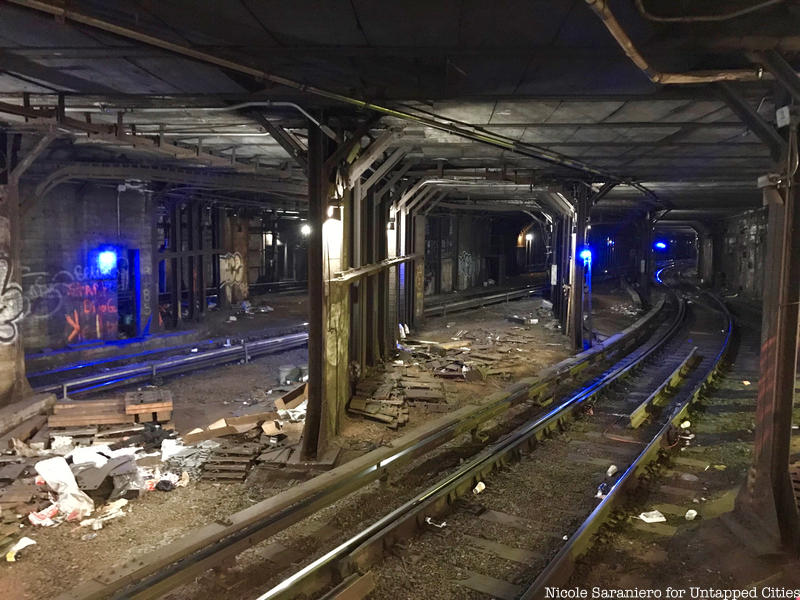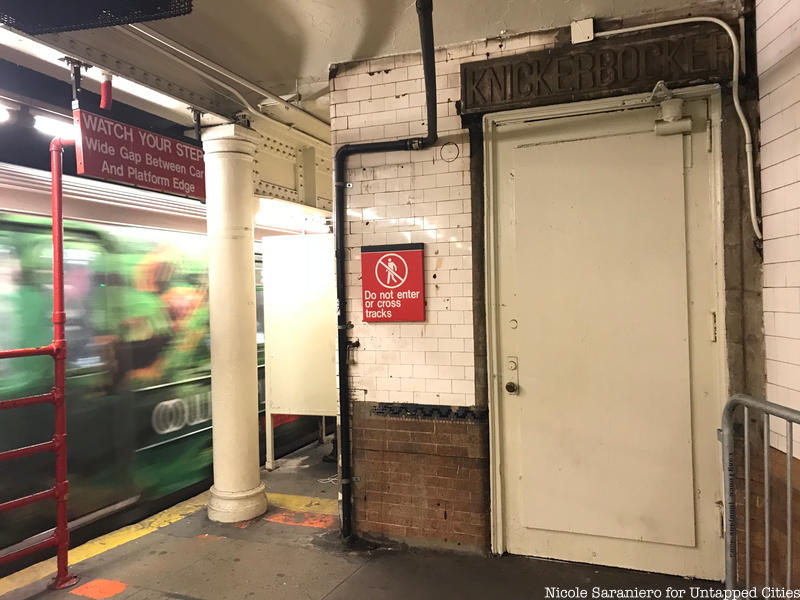Throughout the New York City subway system there are remnants of abandoned stations, tracks no longer in use and corridors that have been boarded up. All of these pieces of the past tell us something about the system’s history and evolution. One of the places where the subway’s growth and change is most evident is the Times Square/42nd Street station.
One of the busiest stations in the system today, the Times Square station was one of the first twenty-eight stations to open along New York City’s first subway line, the Interborough Rapid Transit, in 1904. Among the colorful new artwork, loud buskers and hurried commuters that flood the station today, you can still find remnants of the original station which was designed by Heins and LaFarge. Check out four remnants of the original station that can be found in the current station today and join our upcoming underground tour to uncover the secrets of the system while exploring the stations and lines of Lower Manhattan, starting at the birthplace of the system in City Hall Park.
Underground Tour of the NYC Subway
1. The Grand Central Shuttle Tracks

Riders taking the shuttle from Times Square to Grand Central Terminal may be perplexed to notice that the tracks are numbered 1, 3 and 4. There is no Track 2. This is because what would have been Track 2 was covered over to make a platform for Track 3. When the station was originally built, there were two local and two express tracks. Track 2 was a downtown express track on which trains would bypass Times Square station. Track 3 was the former northbound track, while Tracks 1 and 4 were local tracks.
These tracks offered a continuous ride north from the very first station at City Hall Station to the terminus at 145th Street and back again until 1918. At that time, Track 3 was converted from an express track to an additional local shuttle track between Times Square and Grand Central Terminal. Track 2 was covered over, originally by a wooden platform which was replaced by a concrete one decades later, so riders could access the newly local Track 3.
You can still see the path that the original four tracks would have taken if you walk to the end of the platform. There are four distinct arches that run almost perpendicular to current tracks, and show the curved paths the original lines once traveled. While two of the three shuttle tracks terminate here, you can actually see that Track 4 continues on and connects to the northbound track of the 1 train. The track is currently spanned by a pedestrian bridge and trains do not usually continue through that way.






